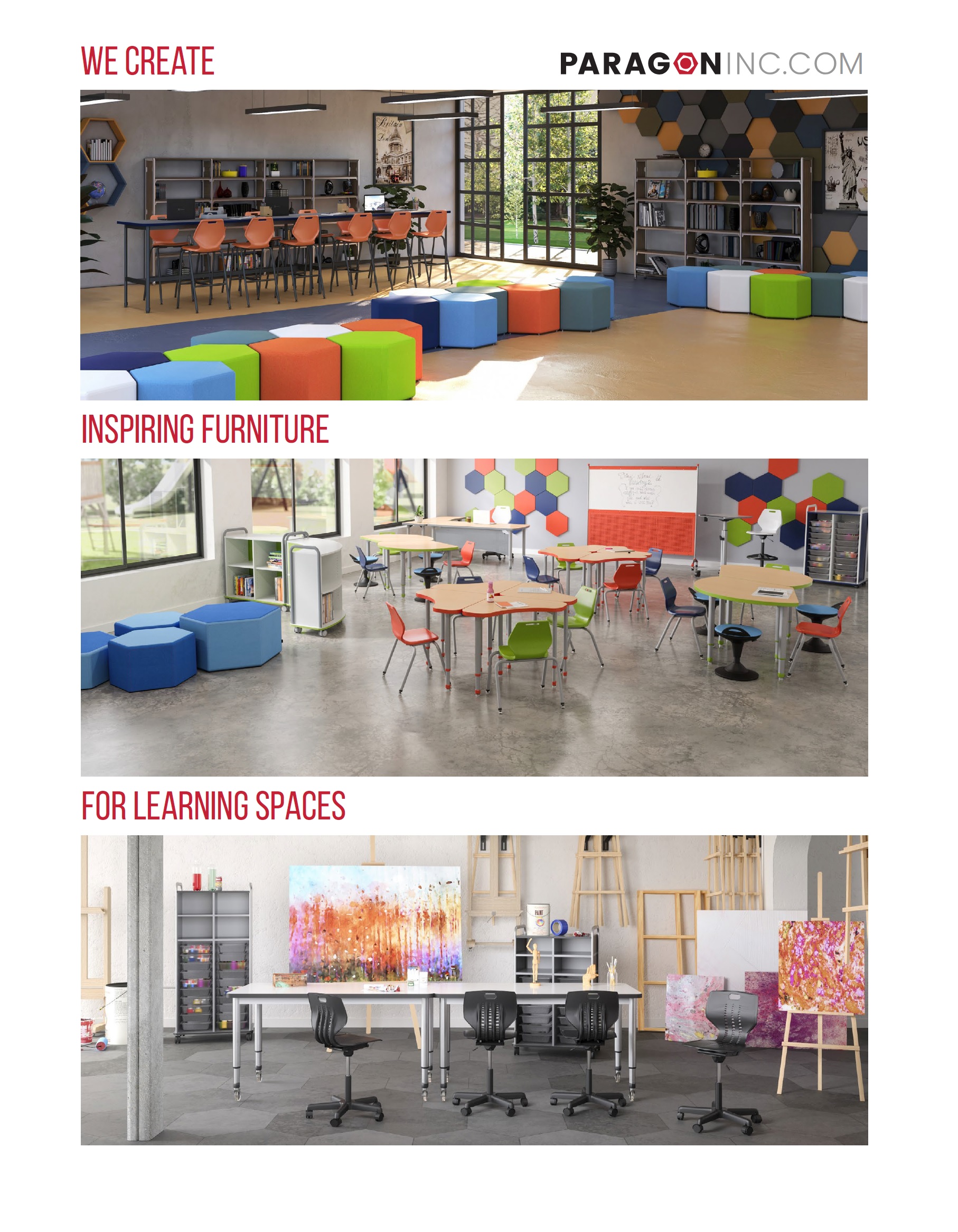SENSORY SMART CLASSROOMS
HOW TO CREATE CALM, FOCUSED LEARNING ENVIRONMENTS
Walk into any classroom on a busy school day and you’re likely to find a colorful, active, and sometimes overwhelming space. Bright posters, loud chatter, squeaky chairs, and harsh fluorescent lighting. For many students, especially those with sensory sensitivities, this environment isn’t just distracting, it’s stressful and overwhelming.
Educators and school leaders are starting to recognize the powerful impact that classroom design has on student well-being. A growing number of schools are turning to sensory-smart design as a way to reduce anxiety, improve focus, and create learning spaces that support all types of learners.
Why Sensory-Smart Spaces Matter
Attention spans among students are declining, with studies showing that younger generations are particularly vulnerable to distraction in overstimulating environments. A 2021 study from the Centers for Disease Control and Prevention (CDC), found that mental health concerns among school-aged children are rising, with anxiety, attention issues, and emotional regulation difficulties becoming increasingly common in schools.
Sensory-smart classrooms are designed with these realities in mind. They offer environments that reduce cognitive overload, minimize unnecessary stressors, and provide comfort and choice. While traditional classrooms often follow a one-size-fits-all approach, sensory-smart spaces acknowledge that students process the world in many different ways, and that thoughtful design can make a real difference.
Common Triggers in the Classroom
Before making changes, it’s helpful to understand what might be contributing to sensory overload. Some of the most common environmental triggers include:
- Harsh or flickering lights: Standard overhead fluorescent lights can cause visual discomfort and even headaches for some students.
- Echoing sound and constant noise: Hard surfaces and open layouts can make it hard for students to focus, especially in larger classrooms.
- Visual clutter: Busy bulletin boards, crowded walls, and disorganized shelves may distract students who are sensitive to visual input.
- Rigid seating and lack of movement: Traditional desks and chairs don’t allow for much flexibility or physical variation throughout the day, and many students require flexibility to focus properly.
These elements may seem minor, but when combined, they can significantly affect a student’s ability to stay focused and calm.
Strategies to Create Sensory Ergonomic Spaces
Creating a sensory-smart classroom doesn’t require a complete renovation. Small, intentional design choices can have a big impact. Here are a few key strategies:
- Use calm, organic color palettes: Neutral tones and muted colors create a more soothing visual environment. Soft blues, greens, and earth tones can help reduce visual fatigue.
- Add soft elements like rugs, soft seating, and cushions: These textures help absorb sound and offer comforting spaces for students to relax, read, or reset.
- Introduce sound-reducing materials: Curtains, rugs, acoustic panels, and soft seating elements throughout the room can reduce echoes and noise.
- Offer seating choices: Give students the option to use pivot stools, stand at a high table, choose foam seating, or use traditional chairs. Providing options supports movement and comfort throughout the day.
- Design quiet zones or sensory corners: A small area with soft seating, low lighting, and calming visuals gives students a place to take a break when they feel overwhelmed.
These strategies not only help students with specific sensory needs, but they also improve the learning environment for everyone.
Inclusion for All Learners
Spaces with sensory ergonomic design are all about creating inclusive environments where all students feel safe, comfortable, and capable of doing their best work.
When schools implement sensory-smart strategies, they are embracing a philosophy of universal design – an approach that anticipates the varied needs of learners and removes barriers before they arise. These improvements also benefit teachers, who often face sensory stressors themselves and appreciate calmer, better-organized classrooms.
Most importantly, these changes promote equity. Students who may have previously struggled in a traditional classroom can now access learning in a way that respects their individual needs.
Design for the Senses, Design for Success
Classroom design is more than just aesthetics. It’s a tool for inclusion, support for mental health, and a driver of focus and engagement. Sensory-smart classrooms don’t just look different, they feel different as well. They send a message to students that their comfort and well-being matter.
As schools consider how to make learning environments more effective, it’s time to build with the senses in mind. Every texture, sound, color, and seat choice is a chance to create a calmer, more compassionate space for students to thrive.
When students feel calm, safe, and supported, they’re better prepared to learn.
Download this brief but robust guide to learn everything you need to know about Paragon Furniture
CLASSROOM DESIGN FILES
Access all of the design resources you need to create a beautiful classroom!

